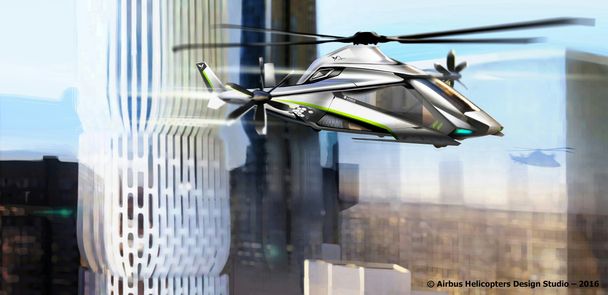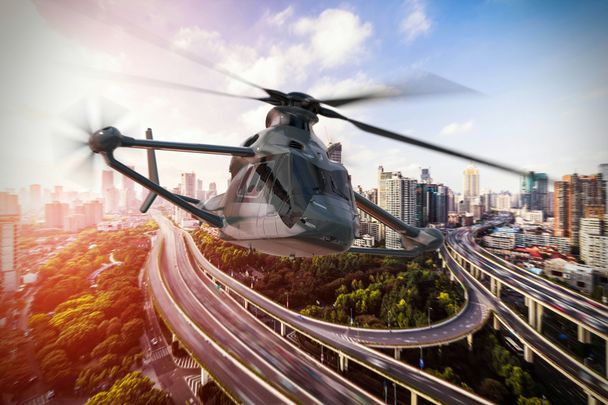Clean Sky 2

The future of high-speed rotorcraft
Key Features of Racer
Racer is a high-speed helicopter demonstrator currently being developed by Airbus Helicopters as part of the Clean Sky 2 research programme.
Building upon the achievements of the company’s X3 technology demonstrator, Racer helps refine the aircraft’ aerodynamic configuration and brings it closer to an operational design with the objective of meeting future requirements for increase speed.
The simplicity of the concept is one of the main assets of the aircraft configuration, which combines fixed wings for energy efficient lift, propellers (so called lateral rotors) for energy-efficient propulsion and a main rotor that provides energy-efficient VTOL (vertical takeoff and landing) flight capabilities.
The demonstrator’s design is optimized for a cruise speed of approximately 400 km/h and aims at validating the best trade-off between cost efficiency, sustainability and mission performance.
Development of the demonstrator relies on a wide European network of almost 40 industrial partners.

Main Missions
The aircraft targets missions requiring the helicopter’s unique hovering and landing capabilities but for which travel time is either of vital importance (Emergency Medical Transport, Search and Rescue) or contributing highly to mission efficiency ( Passengers transport in the O&G industry, Private and business aviation etc.)

Key dates
2010-2013 X3 demonstration
2016: Completion of wind tunnel testing campaign validating Racer’s aerodynamic design.
2017: Design configuration/ Preliminary Design Review
2018: Critical Design Review
2019: Prototype assembly
2020: Flight Tests
About Clean Sky
The European aeronautical sector is a global leader, comprising the talent and initiative of Europe’s centres of industry. With a steady rate of growth and need for aircraft in the thousands over the next decades, concerns have been raised about the sector’s environmental impact. Clean Sky is the European Union’s response.
Clean Sky is a joint undertaking of the European Commission and the European aeronautics industry (Airbus, Airbus Helicopters, Fraunhofer, Saab, Liebhrerr, Rolls Royce, and others), and is part of the EU Horizon 2020 research and innovation programme. Its mission is to develop innovative, cutting-edge technology with the goal of making a substantial positive impact on noise reduction, CO2 emissions, and fuel economy.
With a budget consisting of contributions on a 50/50 basis, made by the Commission and the aeronautical industry, Clean Sky delivers technology demonstrators in all segments of civil air transport, grouped into areas called integrated technology demonstrators (ITD).
Under the management of the Clean Sky Joint Undertaking (CSJU) the programme’s fi rst phase, Clean Sky 1, put each ITD under the leadership of two industry leaders. Examples of successful demonstrators include Airbus Helicopters’ Bluecopter which, by optimising the design of certain shapes on the fuselage of an H135 helicopter, successfully showed improvements in drag reduction; and the Tech 800 demonstration engine, which showed advances for small- and medium-size helicopter engines with savings of 15 percent fuel burn.
“Such demonstrators incorporate mature technology – developed through the talent of industry, universities, research centres and small and medium–size enterprises – into full-scale demonstrators. The result is a rapid evaluation and testing that helps bring advanced levels of maturity to projects’ designs and techniques,” said Éric Dautriat, Executive Director of Clean Sky. “With this, the hoped-for end result is implementing innovative technology in future products and markets.” The technology of the Tech 800 demonstration engine, for example, was integrated into the product development of the new Turbomeca ARRANO engine, recently selected as the engine of Airbus Helicopters’ H160.
Following on the progress of CS1, Clean Sky 2 – which represents a budget of €4 billion over seven years (2017 to 2024) – will deliver break-through technology which will be incorporated, from 2025 onwards, into future generations of aircraft